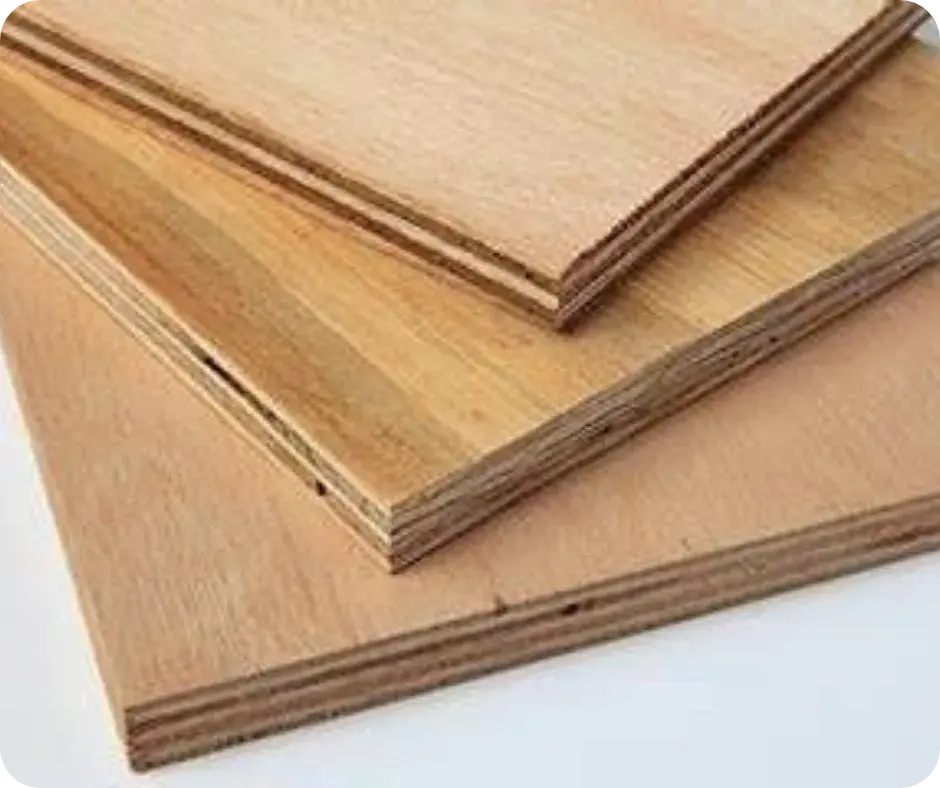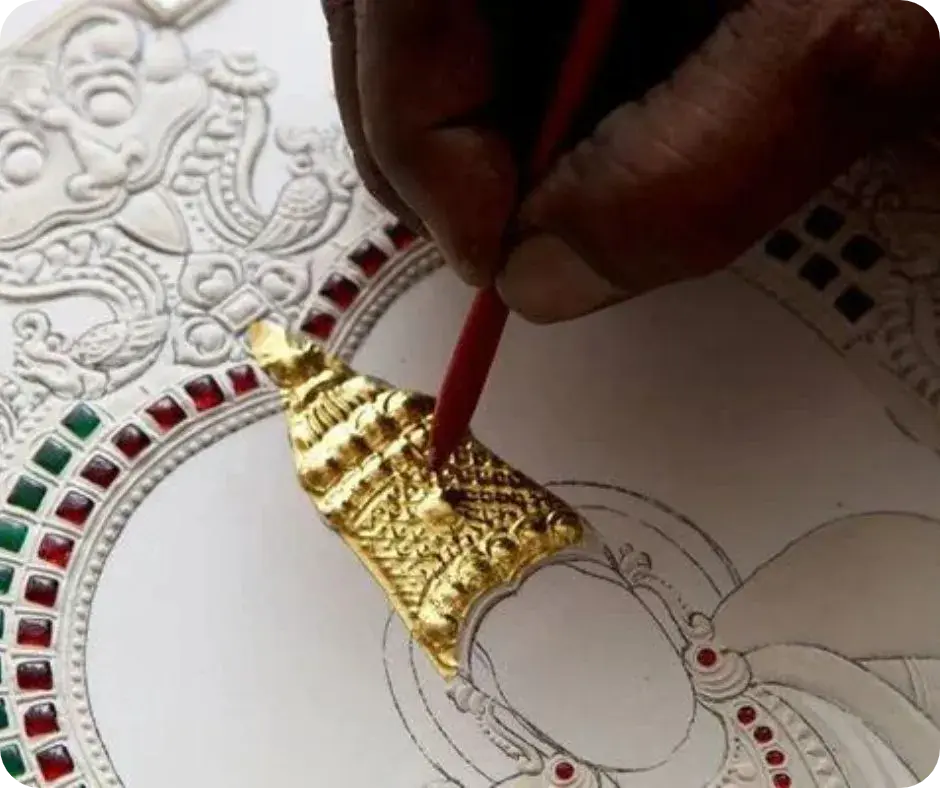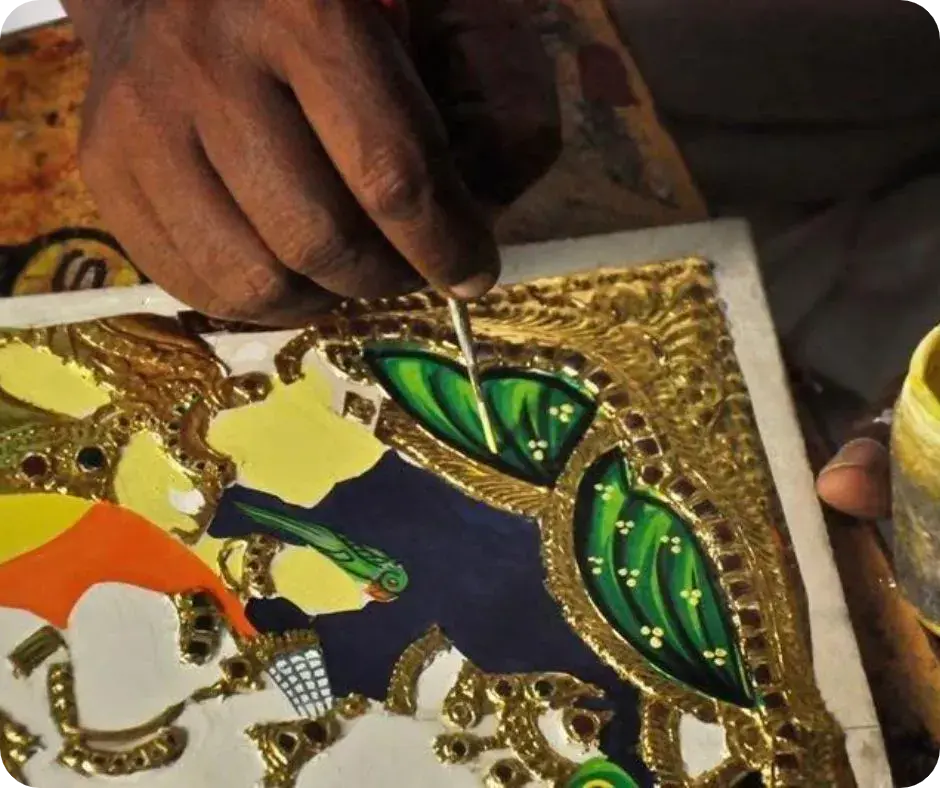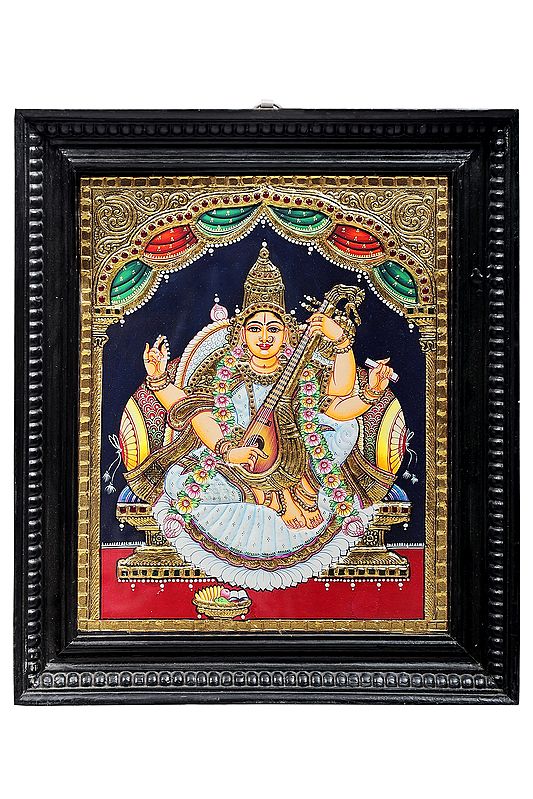
| Specifications |
| PAA292 | |
| TANJORE PAINTING TRADITIONAL COLORS WITH 24 KARAT GOLD | |
| 18 inch x 15 inch x 2 inch (With Frame)14 inch x 11 inch (Without Frame) | |
| Weight 2.80 kg |
| Delivery and Return Policies |
| Usually ships in 30 days | |
| Returns and Exchanges accepted within 7 days | |
| Free Delivery |
Goddess Saraswati is one among the three Goddesses (Lakshmi and Parvati) that form the divine
triad known as ‘Tridevi’ which is worshiped and given utmost importance in
Shaktism. Being the eternal consort and internal potency of Lord Brahma, she
assists him in creating the material world, and thus is associated with Rajas
Guna (mode of passion). She is revered as the bestower of knowledge of the
Absolute Truth to her devotees which is the ultimate goal of human life.
Clad in a white saree, Goddess Saraswati is seated on a white lotus placed on an elevated seat. The white lotus represents purity and the victory of good over evil. She is adorned with several jewels, a flower garland worn over her shoulders, and a crown on her head that shows her exalted personality. She sits in ardhapadmasana; one knee folded above while the other lies parallel on the seat. Her four arms that carry different items represent the four heads of Lord Brahma; with the upper left hand and lower right hand she holds a musical instrument known as Veena which symbolizes the sweet flow of the rhythm of knowledge, the upper right hand holds a rosary of crystal beads which emphasizes the importance of chanting the holy names of the Supreme Lord, while the lower left hand holds the Vedas (scriptures). This Tanjore style painting with the use of bright colors and pure gold coating studded with shining stones, evokes a feeling of tranquility and bliss.



Send as free online greeting card

Visual Search